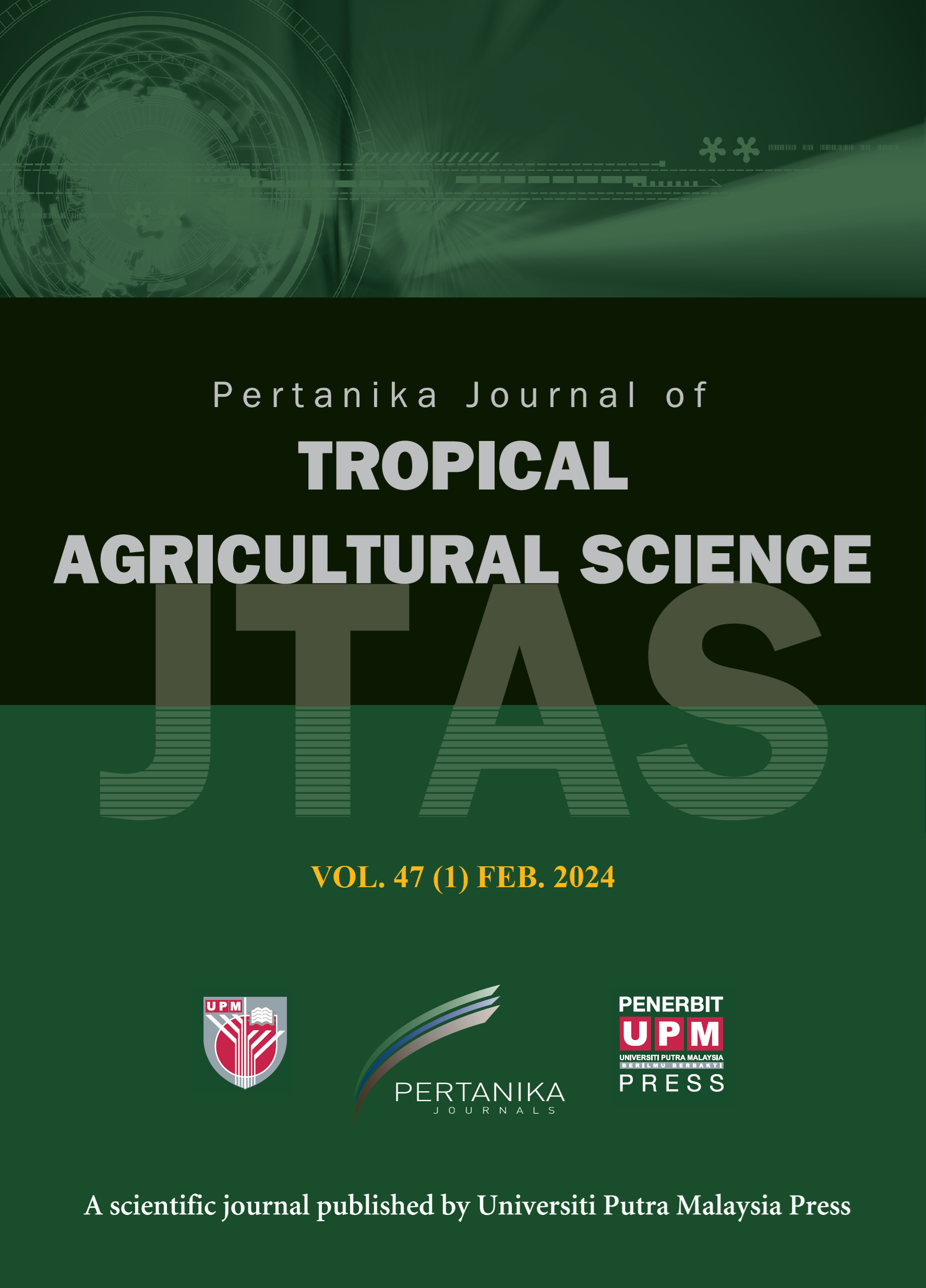PERTANIKA JOURNAL OF TROPICAL AGRICULTURAL SCIENCE
e-ISSN 2231-8542
ISSN 1511-3701
The Growth Potential and Bioaccumulation Ability of Probiotics under the Exposure of Different Heavy Metals
Abang Mohamad Musawi, Wan Lutfi Wan Johari, Natrah Fatin Mohd Ikhsan, Siti Aqlima Ahmad, Nur Adeela Yasid and Mohd Yunus Shukor
Pertanika Journal of Tropical Agricultural Science, Volume 42, Issue 1, February 2019
Keywords: Bacillus spp., Chlorella sp., heavy metals, probiotics, Tor tambroides
Published on: 25 Feb 2019
The presence of heavy metals in aquaculture is a major concern due to possible toxicity effects to the organisms. Bioaccumulation with bacteria is an effective and economical way to remove heavy metals from the water. The objectives of this research were to measure the growth rate of probiotics (Bacillus sp. BpChIAY [BpChIAY] and Bacillus thruingiensis, [Bt]) under different concentrations of selected heavy metals, and to determine the ability of the probiotics to bioaccumulate selected metals. Bacterial strains were grown in nutrient broth with the addition of heavy metals (Cu, Cr, Cd, Zn, Ni) at 37°C to determine the growth under exposure to heavy metals. The bioaccumulation experiment was conducted by exposing the strains' pellets to heavy metals solutions. The concentrations of heavy metals were measured using Atomic Absorption Spectroscopy (AAS). The bacterial growth percentages when grown under 2 ppm Zn, Ni and Cd for BpChIAY were 128%, 103% and 67%, and for BT, the growth rates were 97.7%, 98.8% and 36.2%, respectively. The findings showed the order of the toxicity in the order from the most toxic: Cu>Cr>Cd>Zn>Ni. Both strains were able to bioaccumulate the heavy metals, and BpChIAY was a better metal absorber than BT at the rate of 0.0539 mg/g for Zn, 0.0781 mg/g for Ni and 0.0256 mg/g for Cd.
ISSN 1511-3701
e-ISSN 2231-8542




